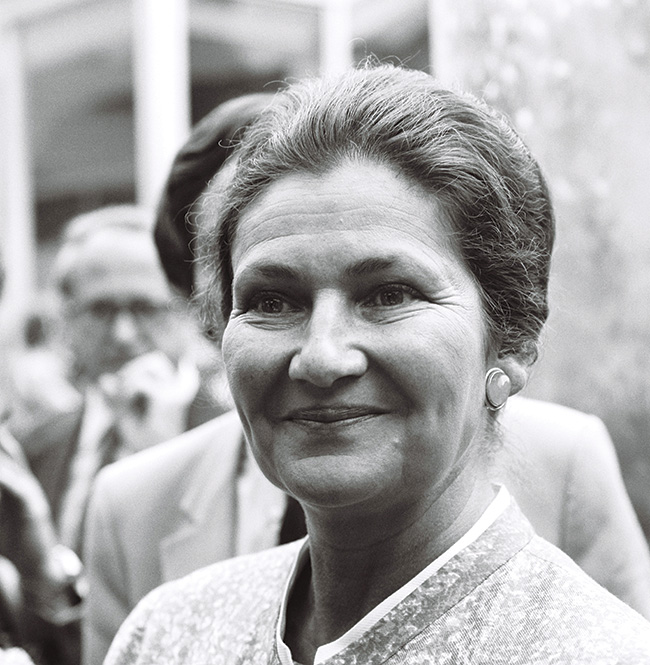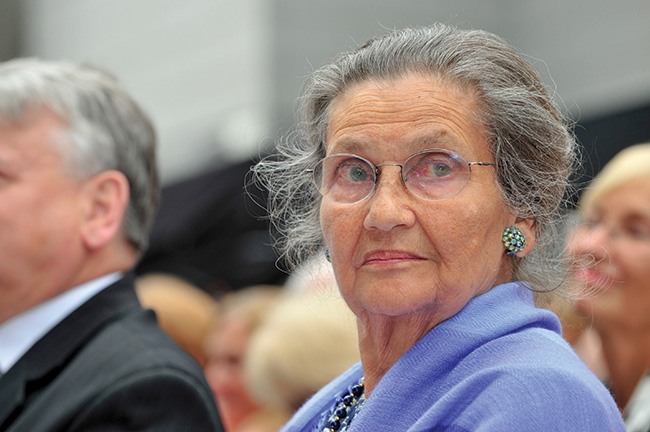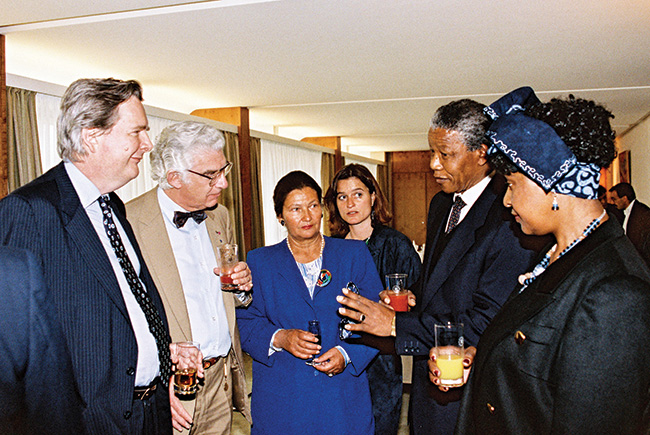Icons of France: Simone Veil

Sarah Lavigne looks at the life and times of Simone Veil, the legendary politician and magistrate who took her suffering in the Holocaust and used it as a force for good.
Last autumn, French movie theatres were filled with film lovers eager to watch Simone Veil, le voyage du siècle, Olivier Dahan’s hotly anticipated biopic about one of France’s most beloved politicians.
A Holocaust survivor, pioneer and women’s rights advocate, Veil fought against injustice, helping the most vulnerable as a magistrate and political figure in France and Europe. Alongside her battles, it’s her courage and humanity that reached the hearts of the nation and made her an undeniable icon.
Her happy childhood in Nice was cut brutally short by the Second World War. In 1944, when Simone (née Jacob) was not yet 17, her entire family was arrested. Her father, André, and brother, Jean, lost their lives in a convoy headed for the Baltics; her sister, Denise, having joined the Resistance, was later sent to Ravensbrück. Simone suffered the horrors of Auschwitz-Birkenau, with her oldest sister, Madeleine (nicknamed Milou) and Yvonne, the mother she adored. Although they survived the atrocities of the camp and the infamous death march out of Poland, Simone’s mother succumbed to exhaustion and typhus when they reached Bergen-Belsen. Simone, Milou and Denise were reunited in Paris after liberation, but tragedy hit again when a few years later, Milou and her young son died as a result of a car crash.

Veil at the inauguration of the Agora Simone Veil in Brussels © European Union 2021 – EP, Emmanuel
In 2001, Veil became the first President of the Fondation pour la Mémoire de la Shoah, an organisation that funds cultural, educational and research projects on the Holocaust and supports its victims. She spoke publicly of the camps, relating the terror, brutality, humiliation and dehumanisation prisoners were subjected to, and using her personal tragedy to appeal against hatred, anti-semitism, racism and genocide.
Her harrowing past may be what sparked in Veil the strong conviction that unifying Europe was essential to protecting an all-too-fragile peace. In 1979, she entered the European political stage and made history by becoming the first female President of the European Parliament, and the first of a Parliament directly elected by its European citizens. Her 30-month term was followed by more than a decade as an MEP, during which time she was engaged in different committees, from legal and environmental affairs to human rights. Marked by the protection of peace and human rights on the continent and beyond, her tenures also accompanied significant events in European history, including the reunification of Germany and the conflict in the former Yugoslavia.
Leaving Parliament in 1993, she nevertheless remained firmly dedicated to Europe, and campaigned in 2005 in favour of a European Constitution. The European Union also helped progress another of her quests: the one for women’s rights. Remembering her mother, who wasn’t allowed to work, Veil valued the independence a professional life could bring women and she forged a path for them to many roles within the judiciary, government and cultural organisations, until then only held by men. Perhaps she is most remembered for the courage and conviction with which, as health minister, she campaigned to legalise abortion, braving some hostility in a France divided on the issue.

Veil with Nelson Mandela in 1990
In November 1974, she stood before a parliament almost completely composed of men to defend the rights of French women to terminate their pregnancies safely. Poised, solemn and coiffed with the elegant low bun that became her trademark, she voiced the distress of the hundreds of thousands of women who each year faced the dangers of backstreet abortions. Then she won the vote that would protect them. But her improvement of women’s rights didn’t stop there: as a magistrate, she improved the conditions of female prisoners; as health minister, she made contraception available on social security and improved childcare, so women could balance family and work life.
She died in 2017, and in 2018, she became the fifth woman to be interred in the Panthéon, where, with her husband Antoine, she lies among the other greats of France. Tributes came too from the ordinary people she’d fought for and from street artists who plastered her portraits on France’s walls. In a time when war has returned to Europe, and women’s reproductive rights are again threatened, it feels hopeful to once more honour the memory of Simone Veil.

A ceremony held in honour of Veil in 2018
Did You Know?
In 2010, Simone Veil was admitted to the Académie Française. Her ceremonial sword, the handle of which was designed by sculptor Ivan Theimer, tells the story of her battles. The sheath features the face of a woman, representing women’s rights, while the handle bears symbols of peace and unity in recognition of her work with the EU. On the blade appear the French motto, Liberté, Égalité, Fraternité, and the European one, Unis dans la diversité (united in diversity). Engraved on the handle are Auschwitz-Birkenau and 78651, the deportation number tattooed on her left arm when she was just 16.

The coffins of Veil and her husband in the Panthéon © J. Lévy/Wikimedia
During the Second World War, thousands of people across France risked their lives by harbouring Jewish children, men and women in a bid to save them from deportation to the concentration camps. Thanks to Simone Veil, in 2007, the French President Jacques Chirac honoured these courageous people, and a plaque now preserves their memory for ever in the Panthéon.
Simone Veil was among those calling for the nation to open the doors of the Panthéon to the great women of France. In 1993, she wrote to the Prime Minister suggesting the transfer of Marie Curie’s ashes to the “temple of great ‘men’”. In 1995, the scientist and double Nobel prize winner became the second woman to enter the Panthéon, the first being Sophie Berthelot, who had followed her husband, the chemist and politician Marcellin Berthelot, earlier in the century.
From France Today magazine
Lead photo credit : Simone Veil
Share to: Facebook Twitter LinkedIn Email
More in French culture, French feminism, French politics, Simone Veil
Leave a reply
Your email address will not be published. Required fields are marked *




REPLY